From Sauls to Pauls: underground Christian temple in Damascus
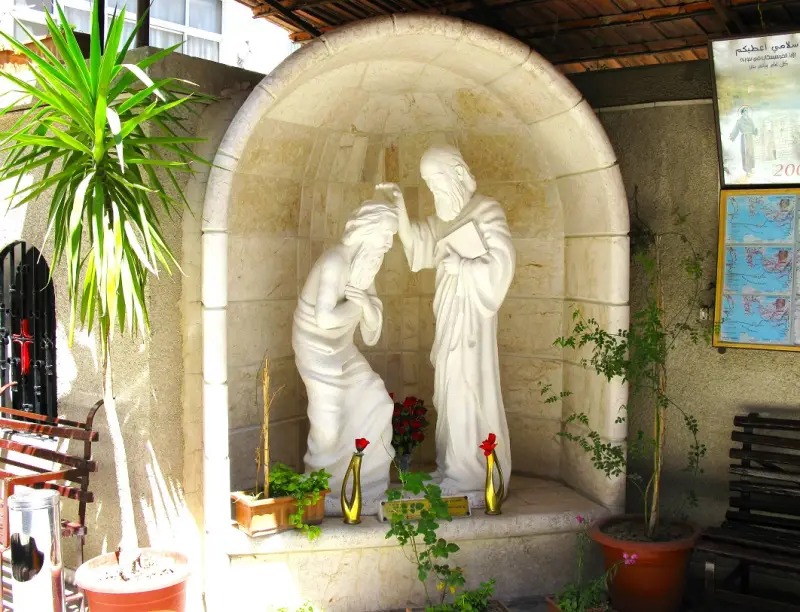
Old Damascus
There is probably not a person in our country who has not heard of Syria.
But few who have heard it will be able to show on a world map where it is located. And even fewer people are familiar with history this amazing country, and very few people know that Syria is still an incompletely explored treasury of world history, and has preserved interesting facts (and buildings) from the history of world religions.
I want to tell one of these stories.
One day, before the war, I was walking in the center of Damascus in an area called “Old Damascus.” This is a historical center, where construction has been prohibited for 100 years, and thanks to such a wise decision, this microdistrict has been preserved in the architectural style (or more precisely, in the architectural chaos) in which it was 200-300 years ago.
And sometimes, wandering aimlessly along these ancient back streets, where old cedar beams, bent under the pressure of centuries, support dilapidated balconies, you sometimes completely lose touch with reality and feel like a traveler of the 17th century.
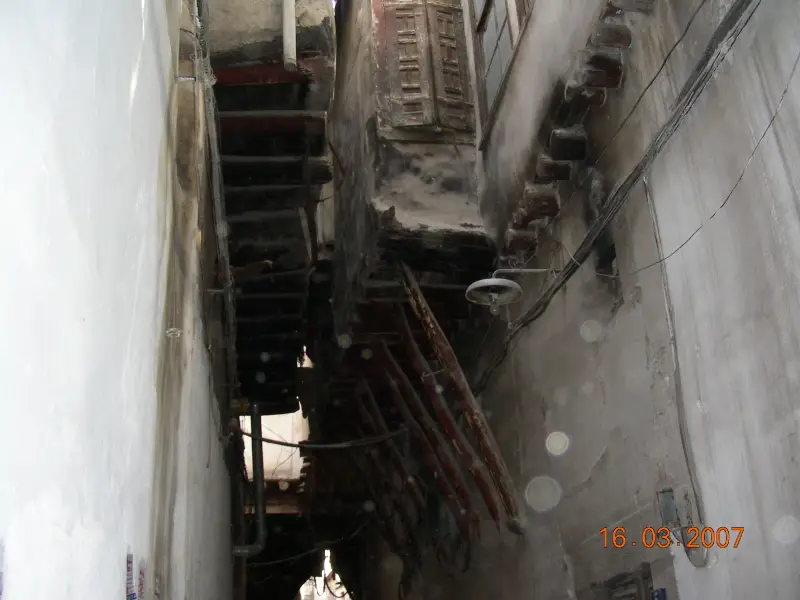
There are a lot of orbs in the photo. They can often be found in ancient buildings in Syrian cities. But I have never been able to capture them in churches and mosques.
During my youth, I really loved such leisurely walks through Old Damascus, when you don’t go as a tourist to achieve some pre-set goal, but (as you naively think) wander through the ancient streets just like that, aimlessly, on a whim.
And, as always, my constant companion, my camera, wandered along with me.
One day, returning from another walk through the Old City, I showed the footage to my friend, Dr. Hussam Sahli, who lived in Damascus almost his entire life (not counting the years spent in Moscow).
- Oh... I see that you were walking along Straight Street... Do you know that it is mentioned in the Bible? There is also the Church of St. Ananias nearby, have you seen it?
– No, I don’t know (here it must be admitted that in those years my knowledge of the Bible was very meager). And I didn’t see any church; if I had come across one, I would have definitely noticed it.
My friend just smiled mysteriously and advised me to go to the Old City again the next day, take a taxi to the Eastern Gate (Bab Tuma), enter it and immediately turn right into the alley that will lead exactly to the place I need.
From Savlov to Pavli
Here it is necessary to make a digression and tell an old legend, in the version that I once heard in Damascus.
Once upon a time, a man named Saul lived in Jerusalem. And he was famous for the fact that he fiercely hated the first Christians, whom in those years the Jews considered apostates, and therefore were cruelly tortured and often beaten to death.
And this Saul, who had previously persecuted Christians in Jerusalem, received information that in Damascus this “heresy” had also taken root, and there was a Christian community there.
And so this tireless fighter for the “correct faith” gathered a punitive detachment of fanatics just like him, and they went to Damascus to certainly find local Christians and immediately put them to death.
And then, one day that was not wonderful for Saul, this detachment under his command moved to Damascus.
But halfway there, a big problem occurred: a bright glow suddenly appeared in the sky, blinding all the participants in this expedition.
After which the glow disappeared, and Saul discovered that he could not see anything - he was blind.
Then Saul’s companions, who had retained their sight, put their shocked commander on a horse, and the detachment, in complete decline of morale, moved towards Damascus.
But they did not have time to reach the city and stopped for the night. Severely shocked by the misfortune that had occurred, Saul forgot himself in a disturbing dream, where a man appeared before him, dressed like some kind of tramp, and he asked reproachfully: “Saul, why are you persecuting me and my children?”
Then the dreamer gave Saul a brief instruction: you must arrive in Damascus, and on the street called Straight, find the house of a man named Judas. A man named Ananias will come there and he will help you.
Frightened by such a strange dream, Saul woke up, woke up his companions and ordered them, without delay, to take him to Damascus to the house of Judas, unknown to him.
That same night, the head of the Damascus Christian community named Ananias had a strange dream: he saw a man in beggar’s clothes with unusually expressive, as if unearthly eyes, and he said: “In the morning, go to the house of Judas, who lives on Straight Street, There will be a blind man there, and you must lay your hands on him.”
Ananias immediately woke up in great confusion of feelings, washed his face and, without even having breakfast, proceeded to the house of Judah, where he saw a group of armed men, clearly of an unfriendly appearance.
One of them asked: “Are you Ananias?”
After an affirmative answer, they brought him a man who explained that he was blind, and then he had a dream where the dreamed man ordered him to come to the house of Judah and wait for some Ananias there.
Marveling at such a coincidence of dreams, Ananias put his palms on the head of this stranger, and at that very moment he received his sight.
Then Ananias invited the stranger to his house, where they met and then talked for a long time, discussing the events that had happened that were surprising to both of them.
As a result, Saul became convinced that a miracle had happened: he was cured by the man whom he was going to kill. And this happened by the will of the One whose existence Saul doubted and whose teaching he fought so fiercely against.
In this state of strong emotional shock and reorganization of his worldview, Saul immediately desired to become a Christian. And Ananias fulfilled his desire that same day: he baptized him in his small underground home church, and at baptism he named him Paul.
This is how the transition of Saul to Paul took place.
This legend contradicts biblical history, but, in my opinion, it is more true, because real miracles are usually simple, and in it we see ordinary people with their inherent human traits: - delusion, hatred, fear, doubt, surprise and affirmation of faith, and not some mythologized half-fairy-tale characters detached from reality.
Subsequently, based on the understanding of this story, the expression “From Sauls to Pauls” arose, initially meaning the sudden degeneration of a detractor of the Christian faith into its ardent preacher, or (later) an equally radical change by a person of some of his main life principles to diametrically opposed ones.
Home Church of St. Ananias
The next day I followed my friend's advice - I caught a taxi and went to the East Gate of the Old City. Then he walked through them, turned right into the alley, reached the end and ran into this wall:
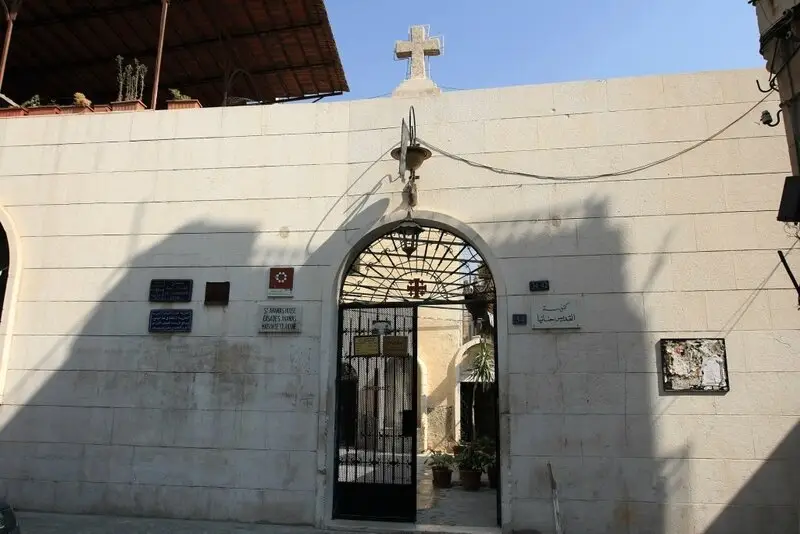
Then he entered the gate and found himself in a small courtyard, sandwiched between several two-story buildings. And he began to look around, trying to find the church building.
But I didn’t see it, my gaze didn’t find anything resembling even a small chapel.
Seeing the entrance to a small shop on the left, I decided to go there and ask the seller to tell me where the church I was looking for was located.
In those days (I don’t know how it is now) people in Damascus were very friendly and friendly, the seller left his counter and literally led me by the hand to the wall of the house, where there were steps of the stairs leading down.
At that moment, not yet understanding why, I began to descend underground and, having walked two flights of stairs, found myself in a room that, in my imagination, based on the greatness of our Russian Orthodox churches, did not at all resemble a church in any way. Was it only the numerous icons hanging on the walls that suggested that there was a Christian temple here?
We, living in Russia, are accustomed to the architectural beauty and internal luxury of our Orthodox churches, majestically rising above the ground.
Here we see the opposite picture: the temple is located underground, it is a relatively small room with walls made of carelessly hewn stones and very modest interior furnishings.
The depth of the vault (ceiling) from ground level is about a meter, the walls are made of stones laid on top of each other.
The temple consists of two small rectangular rooms located perpendicular to each other.
In the first, which is like a long corridor, icons are hung in a row on both walls.
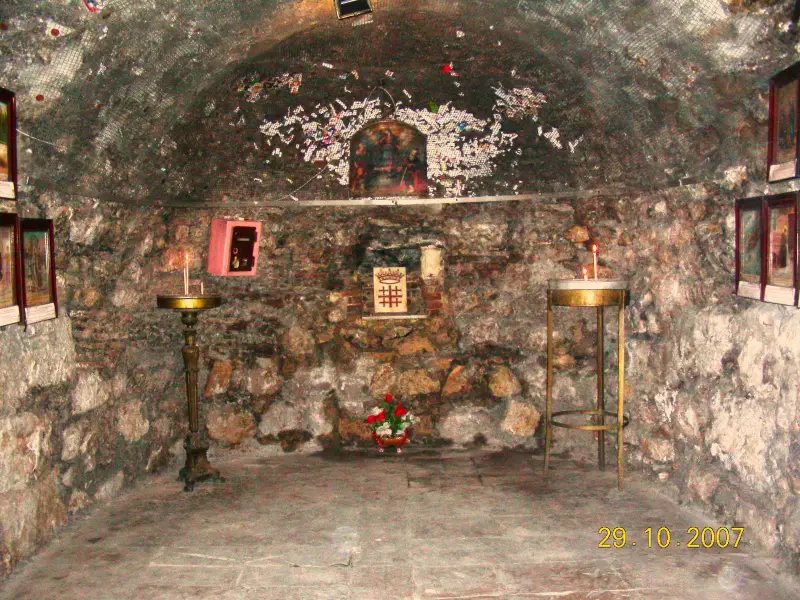
At the end of the room there is an altar, an icon hangs on the wall, and behind it there is a space fenced off with a mesh where believers, after saying prayers for health or peace, place their notes or photographs of relatives and friends.
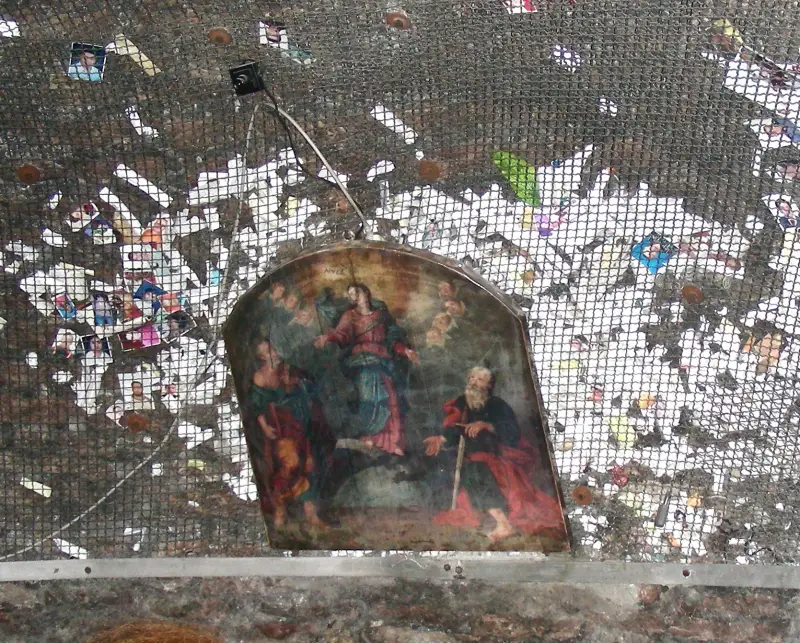
Another larger room where services are held. Benches for parishioners are placed along the walls, and there is a table on the altar.
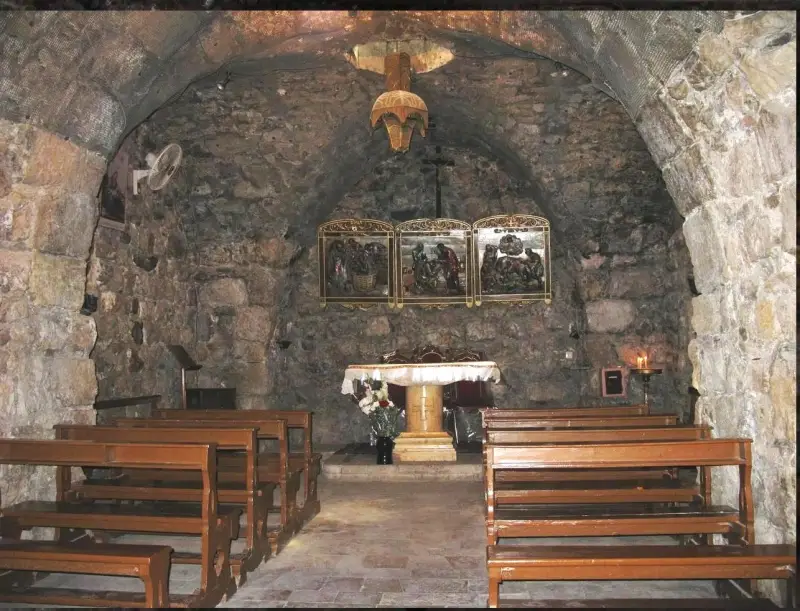
Above it are three icons depicting episodes of biblical history, placed in chronological order, according to the rule of Arabic writing - from right to left:
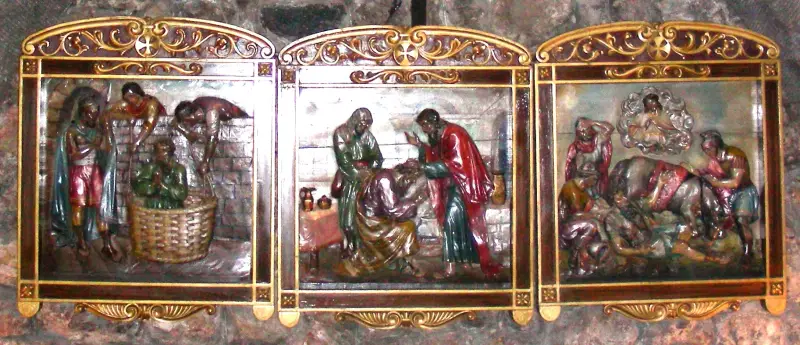
The atmosphere, to put it mildly, is not very pompous, which once again makes us remember the principle of the primacy of the spiritual over the material preached by Jesus Christ.
There is no exact information about the date of construction of this structure. According to one legend, it was some kind of temple building, erected many hundreds of years before the birth of Ananias. And at the time of his birth, it was already below ground level, and was used by his parents as a cellar.
Subsequently, when he became a young man, converted to Christianity and was elected head of the small community of Damascus, Ananias used this dungeon for secret meetings of the first Christian community of Damascus.
It is not possible to establish what is true and what is fiction, so I suggest you simply examine the interior of the underground church (temple) in the photo, and then remember that we are just temporary guests in this world...
Information